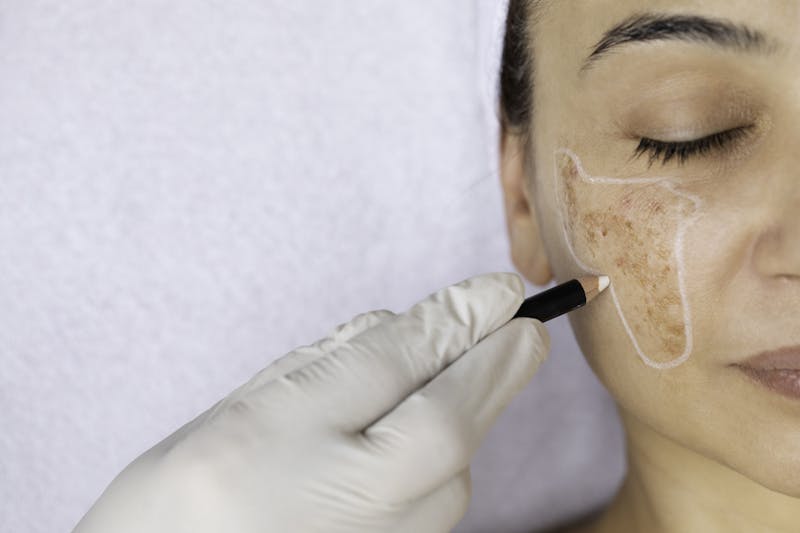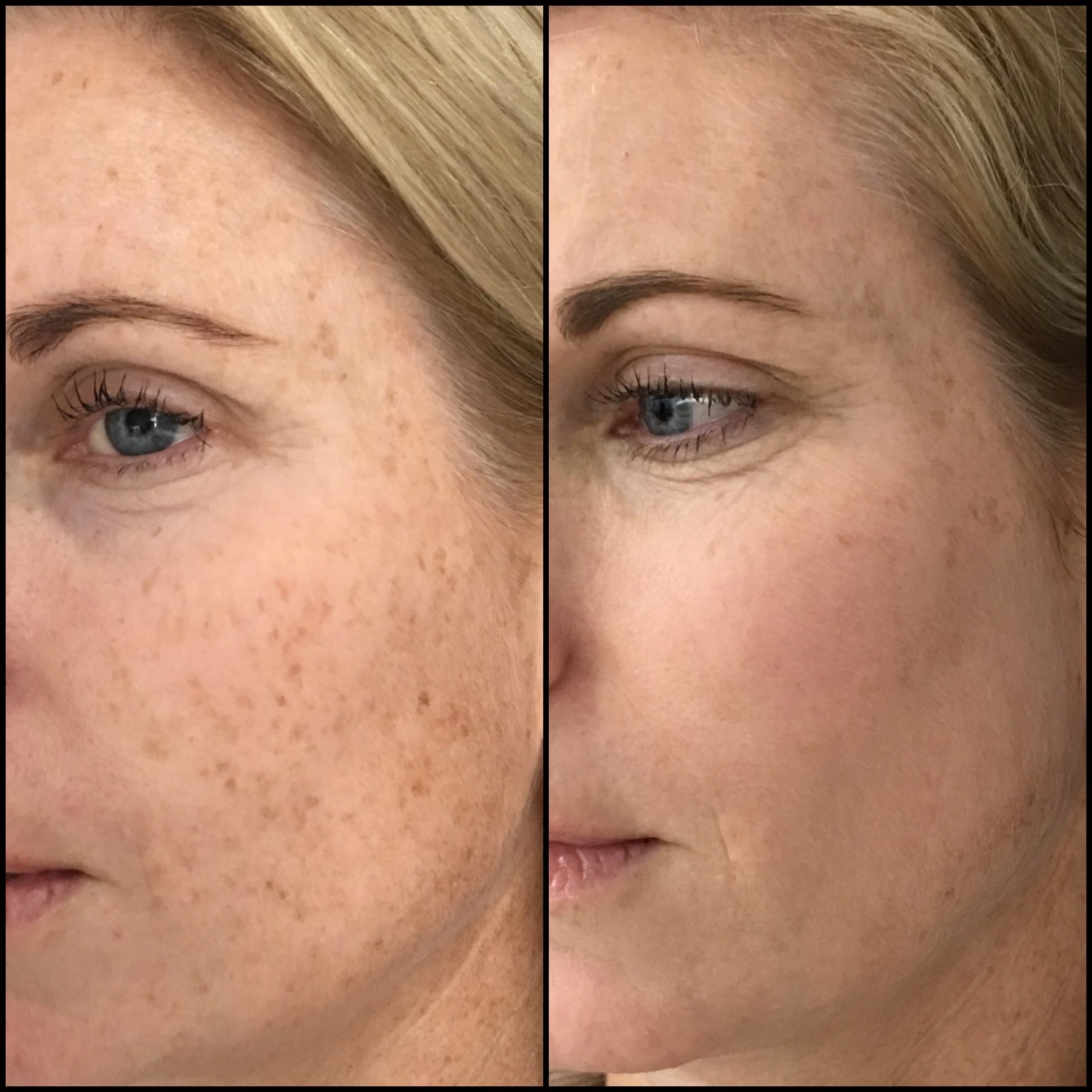
Melasma is one of the most stubborn skin conditions to treat. For patients seeking a non-invasive solution, IPL (Intense Pulsed Light), or photofacial treatment, has emerged as a promising tool in the fight against pigmentation. But does it really work for melasma? Let’s take a closer look at the science and how Dr. Flora Levin approaches this complex concern.
What Is Melasma?
Melasma is a complex and often chronic form of facial hyperpigmentation resulting in symmetric brown or gray discoloration patches. Here’s what you need to know:
- It occurs when melanocytes—the skin’s pigment-producing cells—become overactive and produce excess melanin
- What makes melasma particularly challenging is that it often extends deep into the dermis, beyond the reach of many surface-level treatments
- It most commonly appears on the cheeks, forehead, upper lip, and chin
This condition is most common in women, particularly those with medium to darker skin tones, and is frequently associated with hormonal changes such as:
- Pregnancy (commonly referred to as the "mask of pregnancy")
- Oral contraceptive use
- Hormone replacement therapy
But melasma can also be triggered or worsened by UV exposure, infrared heat, and visible light, making sun protection essential in prevention and management.
Sources:
- American Academy of Dermatology Association (AAD)
- National Institutes of Health (NIH) MedlinePlus
- Cleveland Clinic

The Science Behind IPL
IPL, or Intense Pulsed Light, is a powerful skin rejuvenation tool that uses high-intensity, broad-spectrum light to target pigmented and vascular lesions within the skin.
Unlike lasers, which emit a single wavelength, IPL delivers multiple wavelengths, allowing it to penetrate at various depths.
At Dr. Levin’s Westport practice, we use the advanced Lumenis M22 IPL system, which offers:
- Customizable wavelengths for precision targeting of pigmentation,
- SapphireCool™ Light Guides for patient comfort, and
- Optimal Pulse Technology to minimize tenderness and maximize results.
When light energy is absorbed by the excess melanin in the skin, it heats the pigment and breaks it down. Over a few days, the pigment flakes off as the body naturally exfoliates, revealing a clearer, more even complexion.
Can IPL Be Used for Melasma?
Yes-and no. For example:
- IPL can help fade superficial pigmentation caused by melasma
- Many patients see visible improvements in their skin tone after a series of carefully spaced treatments
- IPL also stimulates collagen, which may enhance the skin’s overall radiance and resilience, helping improve texture and tone beyond pigmentation alone
However, because melasma is a hormonally driven and chronic condition, it can rebound easily, especially with heat or UV exposure. For some individuals, IPL’s thermal energy can potentially trigger inflammation or worsen melasma, particularly in deeper skin tones or if the device isn’t carefully calibrated. This is why personalized evaluation is essential.
Dr. Levin’s Approach: Precision, Safety, and Realistic Expectations
As an oculofacial plastic surgeon specializing in cosmetic and medical skin rejuvenation, Dr. Flora Levin takes a meticulous, customized approach to treating pigmentation concerns like melasma.
During your consultation, Dr. Levin will:
- Carefully examine your skin and determine the depth and pattern of pigmentation
- Evaluate whether your melasma is epidermal (superficial), dermal (deep), or mixed
- Discuss your medical history, lifestyle, and skincare habits
- And develop a tailored treatment plan that may include a combination of IPL, topical treatments, and preventive skincare strategies
IPL can be used cautiously and effectively for suitable candidates, but always with complete transparency about the condition’s complexity and the importance of ongoing maintenance.
How to Maximize Results and Prevent Recurrence
Even with the best tools, managing melasma is a long game. For patients receiving IPL at Dr. Levin’s office, we strongly recommend:
- Daily use of mineral-based sunscreen (SPF 30+), even on cloudy days
- Incorporating antioxidant-rich skincare to reduce oxidative stress
- Avoiding hot yoga, saunas, and excessive heat exposure
- Using topical brighteners like azelaic acid, tranexamic acid, or hydroquinone under medical supervision
Many patients schedule IPL 2–3 times per year, especially after summer, to maintain their results and refresh their skin continually.
Is IPL Right for Your Melasma? Let’s Find Out Together.
If you’ve struggled with melasma or other forms of pigmentation and are wondering whether IPL might be the right path forward, Dr. Levin can help you navigate your options with clarity and confidence. Schedule your consultation in Westport or Fairfield today and take the first step toward clearer, more radiant skin, guided by one of Connecticut’s most trusted aesthetic experts.

